Why has escape of water suddenly become such a big issue for the insurance industry?
Escape of water is a growing problem. After L&G GI’s profits took at 29% hit in 2017, and with the ‘Beast from the East’ freezing the water in hidden household pipes, expanding it and causing substantial damage to the property’s bloodstream, insurers are having to spend an increasing amount of money in repairs.
But why has escape of water suddenly become such a big issue for the insurance industry?
Noel Summerfield, head of household at Admiral

The insurance industry has seen an increase in the cost of escape of water claims over the last few years. This is due to both an increase in the frequency of escape of water claims and the cost of repairing these claims.
Several things have contributed to higher claims costs; our homes have more appliances and systems that use water such dishwashers, central and under-floor heating. New properties often have more en-suites and bathrooms and there has been more renovation of older properties, often adding more bathrooms or utility rooms.
With these trends showing no signs of changing, escape of water claims will no doubt continue, and it is a challenge for the industry to ensure that the costs of these claims are controlled whilst maintaining excellent customer service.
Tony Sault, executive director, EMEIA financial services at EY
Escape of water claims have been steadily rising over recent years,
From January 2013 to January 2017 there was an approximate rise of 52.70% in the average escape of water severity from £1746 to £2,667, according to the ABI.

Our view is that this increase has been driven not by a single but rather by multiple factors acting in concert.
Some of the multiple factors driving escape of water claims inflation are, an increasing Retail Price Index, the upgrading of properties as well as additional plumbed appliances being installed, and the increasing prevalence of concealed plumbing. Other Factors include the consequences of unskilled plumbing DIY coupled with decreased maintenance, it could also be colder winters with higher un-occupancy rates resulting in a higher propensity to claim and finally supply chain betterment.
Insurers have materially increased the excesses for escape of water, which should reduce the frequency and increase the severity of claims.
We believe that escape of water claims inflation will continue to be an issue in the future.
Gareth Howell (right), managing director, AXA Direct

Escape of water has always been a big issue for the insurance industry. A burst pipe is not only heart-wrenching for a customer, it usually results in large losses for an insurer because it can impact large areas of a home and tends to happen when the policyholder is away.
However, an increase in the frequency and severity of cold weather has meant that these claims tend to happen more often than they did in the past. If you also consider that customers have possessions that are more expensive to replace, it is easy to understand why escape of water claims pose such a problem today.
Escape of water is an area where insurers can improve their work on prevention, whether that is working with building firms to make homes more resilient or helping develop technology which helps detect and stop water flow. The sooner we can find ways to lessen the impact the better.
Paul Anscombe, chief executive of the Seventeen Group

There are several reasons why Escape of Water (EOW) claims are increasing but a relevant topical issue is that homeowners are tending to stay in their existing properties and invest in new kitchens and bathrooms rather than upgrading to a new property. The standard of the fittings is, therefore, higher than the initial fit out, thereby pushing up claims costs.
Modern builds and upgraded properties tend to hide pipework rather than have exposed them and water mains are also hidden. This means that leaks can take longer to identify and be costly to fix.
The cost of metals especially copper has increased significantly in recent years so it’s more common to use cheap plastic fixtures which are not as durable as the metal equivalent with shorter lifespans.
A lot of high-end water systems are high pressure which when they burst can cause considerable damage in a very short space of time.
The property bubble isn’t quite a lucrative as it once was so the property investors do not have the funds to invest in upgrades to the properties they purchased during the boom and are waiting for the price to increase again before selling. This means that they are less likely to invest in general improvements such as pipework upgrades and EOW claims are more common.
Jay Borkakoti, director of Home Insurance, UK and Ireland, LexisNexis Risk Solutions
Escape of Water has been the Achilles heel for the industry over a few years now and arguably most concerning as it shows no sign of abating. The inability to fully isolate the root causes makes it difficult to price for Escape of Water efficiently.

It is reasonable to suggest that new plumbing being laid on top of old plumbing can cause water leaks if not done properly, but how do you establish those that are well installed and those that are not? For example, you cannot say that all installations in 3-bed flats are good and 4-bed houses are not, or that all installations in London are good and are bad in Manchester. The same principle applies to other contributory factors for Escape of Water claims, such as frozen pipes and occupancy rates. All of these factors tend to be property and geography agnostic and we all know these are critical components of assessing home insurance risk. This inability to pinpoint root causes means there is no “go-to” dataset that provides the level of accuracy required currently.
Another factor to consider is that these types of claims can also be caused by people. This is reason enough to place personal data at the top of the agenda for helping to manage risk. With the lack of available data to price Escape of Water with the same level of confidence as other perils, there is clear opportunity to create an industry score based on claims data to better understand this; it would be in both the customer’s and the insurer’s interests for this to happen as understanding the key drivers of what’s causing the increase should mean fairer prices overall.
In addition, there is a huge opportunity for enterprising insurers to tap into the potential of connected home technology to mitigate such events. Besides offering ease and convenience, smart home technology also protects, with devices such as motion sensors, smoke detectors and water leak detectors that can send real-time alerts when something goes wrong direct to a smartphone, which is one step closer to being able to avoid them.
Chris Cowen, client relationship manager, Auger

Insurers are focusing on this area of their claim spend which is increasing faster than any other category at present.
Investigation and reinstatement of leak detection claims are increasing as pipes are no longer exposed in buildings and are either boxed-in or encased behind floor surfaces or wall finishes.
Homes now have more expensive finishes and will usually have fully-fitted kitchens and bathrooms.
Most houses also have much more internal plumbing, including multiple bathrooms, en-suites and separate utility rooms.
We often see underfloor heating, integrated plumbing and electrical appliances, and technology that is more expensive to repair and replace.
At Auger, we have spent some time developing the right expertise and technology to correctly diagnose the issue first time, and importantly reduce the amount of expensive enabling and reinstatement works required to substantially reduce claim costs in this area.
Ian Hollingworth, head of Claims at ECIC
As a specialist insurer for the contracting sector, escape of water claims are now the biggest cause of loss at ECIC, ahead of fire-related claims.

A few years ago, the main issue was plastic push-fit pipes which, in a number of instances, burst under too much pressure. For this reason, the contracting sector moved away from using these types of joints and are now, on the whole using metal press-fit joints combined with soldering.
However, our investigations show that in many cases of escape of water, the cause is found to be incorrect fitting of these joints. This is often replicated across an entire site which suggests an issue of training and competency amongst the contractors employed.
Clearly, several factors could be at play here and we are working with our broker partners and trade bodies to highlight this issue.
Craig Foster, managing director of HomeServe Labs
In the UK alone the cost of claims for water damage, and the financial and emotional strain of a leak causing water damage in the home for customers cost the UK £629 million every year. Globally, water leaks are nearly a £20 billion per year problem – escape of water claims being the biggest cost to insurers.

Looking at a recent example, ‘The Beast from the East’ froze water in the pipes of many homes around the country as temperatures reached sub-zero. When frozen, this water expanded and put pressure on joints in pipes, in certain cases causing them to burst and flood homes. However, inside the home, minor perforations to water pipes can be trickier to locate. This is why it’s so important to identify smaller damages and leaks before they exacerbate into burst pipes.
We developed the unique technology in LeakBot so that a single low-cost device can detect exactly the type of small hidden leaks that cause insurance companies and homeowners so many problems throughout the year. It only needs to be installed in one place and is still able to detect all leaks on the water system anywhere around the home, however small. Once connected to the pipe where water comes into the building, it can monitor subtle temperature differences between the temperature of the water inside the pipe and that of the surrounding air to tell if there is a leak anywhere along the house’s plumbing system.
This shows how increasingly the attitude of insurers is shifting from being reactive businesses that respond to catastrophes, to proactive businesses that identify risk and look to prevent undesirable outcomes through IoT. Currently, the majority of insurance premiums go toward payouts for a small portion of the population that may be less responsible homeowners, so IoT provides an immediate benefit to a large group of consumers.
Karl Helgesen, chief claims officer, RSA UK & International
Claims inflation and increased attrition loss ratios associated with escape of water have become some of the largest perils in household books across the insurance industry, with firms seeking measures to manage the escalating costs.

A factor has been changes in interior design trends ‑ the severity of claims has been growing as people increase the sophistication of plumbing and the number of bathrooms in their homes, and opt for more expensive fixtures and furnishings, such as wooden floors, which take longer to dry out and repair.
The issue is now being proactively addressed through changes to pricing and claims processes, as well as opportunities using technology to spot leaks and intervene earlier.
At RSA, we’ve reviewed the end-to-end management of pricing and claims, reflecting increased risk factors in rate and adapting our claims settlement model to get customers back to normal in their homes as quickly as possible after an event. This approach is significantly reducing the time it takes to handle and resolve all the different stages of claims.
Hosted by comedian and actor Tom Allen, 34 Gold, 23 Silver and 22 Bronze awards were handed out across an amazing 34 categories recognising brilliance and innovation right across the breadth of UK general insurance.





































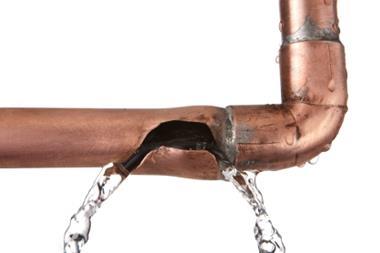
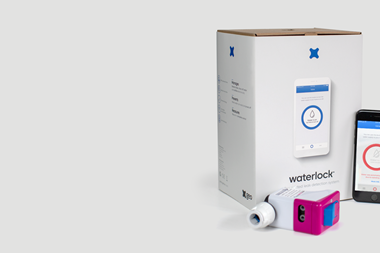
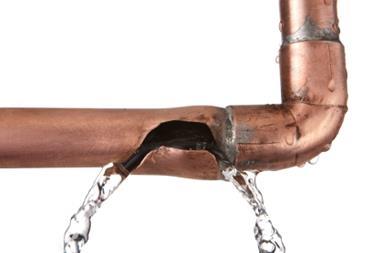
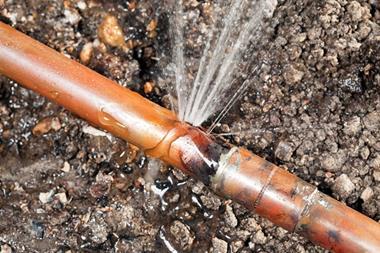
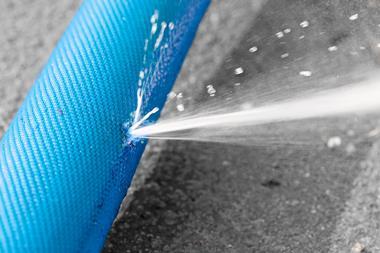
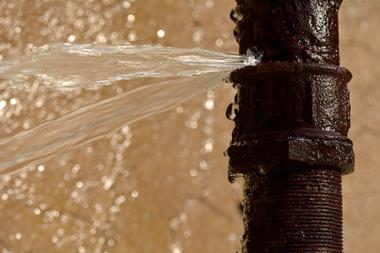



No comments yet